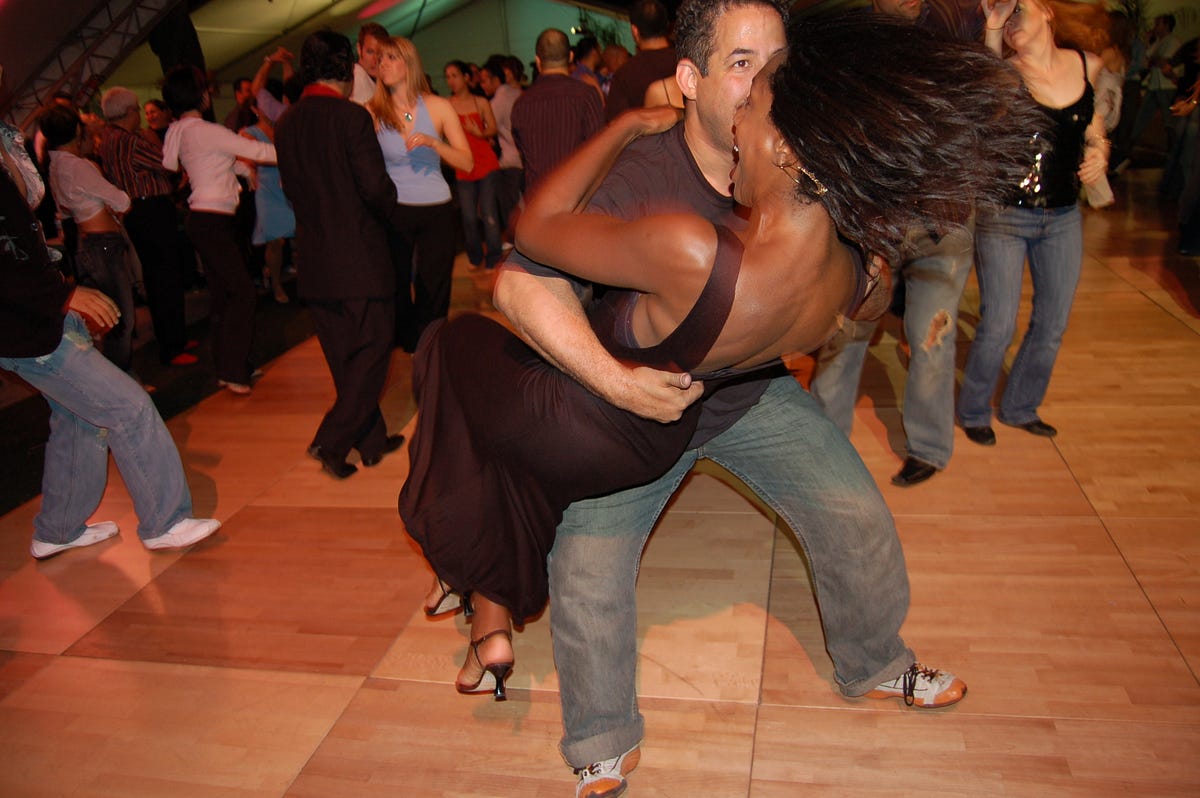The 25-Second Trick For Dance Fridays
Wiki Article
The smart Trick of Dance Fridays That Nobody is Talking About
Table of ContentsThe 25-Second Trick For Dance FridaysDance Fridays - QuestionsIndicators on Dance Fridays You Should KnowNot known Facts About Dance Fridays
Allow's consider Salsa dance and music as a terrific big Tree that appears like this: Salsa is danced worldwide while several technological facets of the dancing coincide across styles (6 steps over 8 beats danced on a quick-quick-slow or slow-quick-quick rhythm), there are several "trademark" features of the major styles of Salsa that differentiate one from the various other.Couples taking part in an Online casino Rueda dance all relocate unison as called by a Leader. Distinguishing functions of Cuban style salsa are circular turn patterns (with "break back" actions on matters 1 and 5) along with body language inspired by typical Afro-Cuban folkloric dancings. Distinct functions of Cali style salsa fasts and intricate footwork, danced with a strong hand hold link between companions.
The beginnings of the style are a subject of argument, yet it is said that New york city style Salsa dancing came from the 1960's because of the increase of Latin American emigrants after the Cuban Revolution. Eddie Torres is one of the most well known New York design professional dancer, being almost generally attributed with popularizing the style to dance centres beyond New york city.
The basic rhythm of "On-2" is slow-quick-quick. The "youngest" of the styles of Salsa, L.A. Design (some individuals have actually called it "West Coastline" design) came to be preferred in the 1990's and has its beginnings in ballroom (Mambo, Swing and Cha, Cha, Cha). Turn patterns lead and comply with methods are greatly influenced by these styles, with the Cross Body Lead being the foundation of the design.
The Buzz on Dance Fridays
Design are implementation of turn patterns and numbers in the "port", with the break actions on counts "1" and "5". This style is likewise identified by elegant and frequently intricate arm styling by the comply with to accent the "1" and "5" matters. The standard rhythm of "On-1" is quick-quick-slow. While Salsa songs has strong origins in Cuban, Colombian and Puerto-Rican folkoric practices, it can not be marked down that all Afro-Latin and Latin American societies have contributed to contemporary Salsa music as we know it today.It's feasible that due to political reasons the payment of Afro-Cuban culture and heritage to modern Salsa in the 1960's and 70's is not extensively recognized, yet it can not be disregarded the significant contribution and impact of the "Queen of Salsa", Celia Cruz. A household name in Cuba and the Central Americas as a vocalist in the 1950's, Celia left Cuba for the U.S

Today Salsa songs is developed, performed and popular global. In 2000 the influence of Latin American music and society (not just Salsa) was acknowledged by the National Academy of Recording Arts and Sciences in the United State and the Latin Grammy Honors were developed. The Latin Grammy's have brought attention to the Salsa Legends and modern Salsa artists alike
The Ultimate Guide To Dance Fridays
identifying attributes of Salsa music are: 4/4 measure signature, Kid Clave and Tumbao rhythms, Montuno Piano Unless you have a background in songs, the above 3 attributes probably indicate absolutely nothing to you. A simpler way to explain Salsa songs is how it does NOT seem like other sorts of Latin American popular music.Bachata is a straight 4 beat dance with a frequency of a syncopated guitara line and a clear lack of any type of "tough" piano, brass (trumpet, trombone) lines. Cha, Cha, Cha resembles Salsa songs the most as it really feels like "actually sluggish" salsa/mambo. salsa club san francisco. Cha, Cha, Cha can be distinguished by it's focus of the dual tumbao beat on counts 4 +5 and 8 +1 (the "cha-cha-cha") You've been to a Salsa evening at a club and you're addicted you enjoy the music, the energy, the look of 2 professional dancers gliding across the dance floor implementing see it here amazing rotates and turn patterns
It's time for lessons. With many workshops around and different designs to pick from, where does a complete newbie begin? The majority of brand name brand-new dancers select to find out L.A. "On-1" design slotted Salsa designs are the most prevalent in North America (with some exceptions of some city centres that still mostly welcome Cuban and Puerto Rican styles) and L (https://www.huntingnet.com/forum/members/salsacrazysf1.html).A
.A. Style will quickly educate you the basics of Salsa timing, weight transfer and transform pattern execution. Lots of professional dancers, as soon as they've had a year or two of dance L.A. Design Salsa under their belts, "button" to New York style in order to diversify their dancing vocabulary; yet many professional dancers choose to stay with simply one style of Salsa and appreciate their time on the dance floor in that certain design (salsa club san francisco).
Design and New York Style all being danced in the same club, with most of the professional dancers having the ability to switch over from one design to the other from one track to the following. Despite which style you choose it is very important to adhere to that design until you're very comfy with the fundamentals of timing, body rhythm and structure action implementation before considering "changing" styles (if you wish to).

Report this wiki page